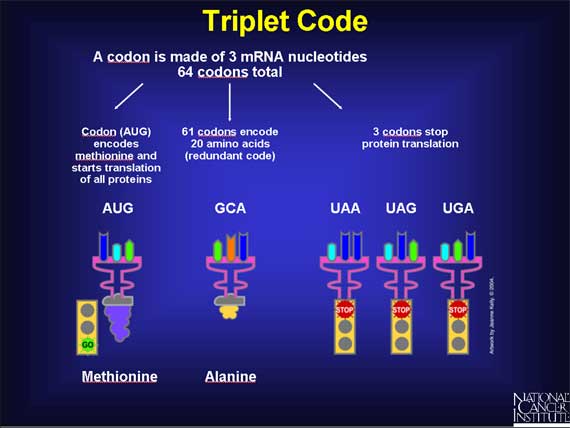|
The translation of base sequences from DNA to protein is dependent on the
nucleotide triplet in mRNA. Each mRNA triplet of nucleotides, called a codon,
codes for a single amino acid, and, ultimately, a string of amino acids makes
up a protein. Since the complementary DNA that specifies a particular mRNA has
only four nucleotide bases in a gene, 64 (4X4X4) possible combinations of
codons are available to code for 20 amino acids. So there is great redundancy.
There are 60 mRNA triplets for 19 amino acids, 3 triplets for "stop," and 1
triplet to call for methionine, the 20th amino acid that signals "start." Most
amino acids are coded for by more than one triplet codon. However, each triplet
is linked to only one amino acid. (For more information on how genes build
proteins, please see Genetic Variation.)

< Previous | Index | Next Slide > |